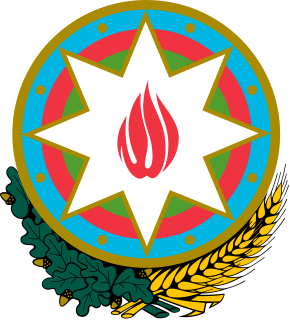 W
WThe state emblem of Azerbaijan mixes traditional and modern symbols. The focal point of the emblem is a stylized flame. The flame is in the shape of the word "Allah" written in Arabic to represent the country's majority-Muslim population. As well as a reference to Azerbaijan's eternal natural oil-gas resources, which has given it the nickname "land of eternal fire".
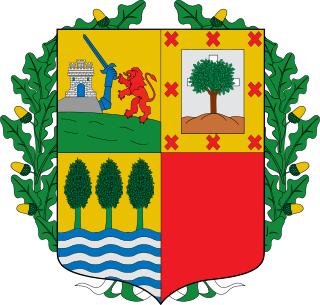 W
WThe current Basque coat of arms ) is the official coat of arms of the Basque Country, Autonomous community of Spain. It consists of a party per cross representing the three historical territories of Álava, Gipuzkoa and Biscay, as well as a fourth, void quarter. The arms are ringed by a regal wreath of oak leaves, symbolic of the Gernikako Arbola. The fourth quarter constituted since the late 19th century the linked chains of Navarre; however, following a legal suit by the Navarre Government claiming that the usage of the arms of a region on the flag of another was illegal, the Constitutional Court of Spain ordered the removal of the chains of Navarre in a judgement of 1986.
 W
WThe Coat of arms of Bivona is the representational emblem of the Italian town of Bivona, in Agrigento, Sicily, situated in the Monti Sicani mountain range.
 W
WThe coat of arms of the Bryansk Oblast was approved by the Bryansk Oblast Duma on November 5, 1998. According to the official description provided by the legislature of the oblast, the arms of the Bryansk Oblast "reflect the characteristic features of the area and its inhabitants: industry and patriotism.
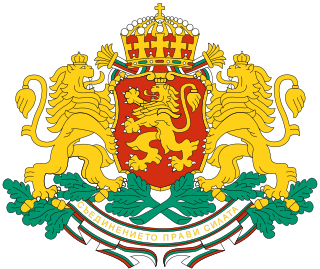 W
WThe coat of arms of Bulgaria consists of a crowned golden lion rampant over a dark red shield; above the shield is the Bulgarian historical crown. The shield is supported by two crowned golden lions rampant; below the shield there is compartment in the shape of oak twigs and white bands with the national motto "Unity makes strength" inscribed on them.
 W
WThe coat of arms of the London Borough of Croydon is the official heraldic arms of the London Borough of Croydon, granted on 10 December 1965.
 W
WThe coat of arms of Estonia is a golden shield which includes a picture of three left-facing blue lions with red tongues in the middle, with golden oak branches placed on both sides of the shield. The insignia derive(s) from the coat of arms of Denmark, which ruled northern Estonia in the thirteenth century.
 W
WThe coat of arms of France depicts a lictor's fasces upon branches of laurel and oak, as well as a ribbon bearing the national motto of Liberté, égalité, fraternité. The arms were created in 1905 by heraldic painter-engraver Maurice de Meyère, and adopted by the French government.
 W
WThe coat of arms of Havana, Cuba, consist of three castles that represent the three original main castles which defended the city—namely, the Fuerza Castle, the Morro Castle and the Punta Castle.
 W
WThe emblem of the Italian Republic was formally adopted by the newly formed Italian Republic on 5 May 1948. Although often referred to as a coat of arms, it is technically an emblem as it was designed not to conform to traditional heraldic rules. The emblem is used extensively by the Italian government.
 W
WCoat of arms of Republic of Latvia was officially adopted by the Constitutional Assembly of Latvia on July 15, 1921, and was in official use from August 19, 1921. It was created using new national symbols and elements of coats of arms of Polish and Swedish Livonia and of the Duchy of Courland and Semigallia. Thus the coat of arms combines symbols of Latvian national statehood, as well as symbols of its historical regions. The Latvian national coat of arms was designed by the Latvian artist Rihards Zariņš.
 W
WThe coat of arms of Mexico depicts a Mexican (golden) eagle perched on a prickly pear cactus devouring a rattlesnake. The design is rooted in the legend that the Aztec people would know where to build their city once they saw an eagle eating a snake on top of a lake. The image has been an important symbol of Mexican politics and culture for centuries. To the people of Tenochtitlan, this symbol had strong religious connotations, and to the Europeans, it came to symbolize the triumph of good over evil.
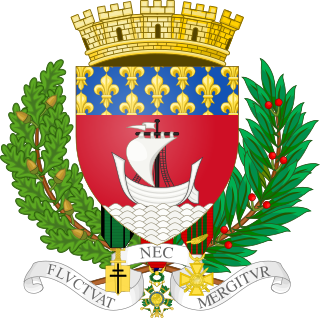 W
WThe coat of arms of the city of Paris shows a silver sailing ship on waves of the sea in a red field, with a chief showing the Royal emblem of gold-on-blue fleur-de-lis. Originally introduced in the 14th century, its current form dates to 1853. The city motto is Fluctuat nec mergitur. The traditional colors of the city of Paris are red and blue.
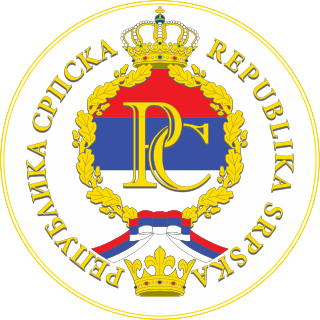 W
WThe Seal of Republika Srpska with the description: the flag of Republika Srpska and the Cyrillic letters "РС" ("RS"), the red-blue-white tricolor are in the center of the seal, twisted with the golden Oak leaves, a traditional pre-Christian symbol sacred to most Slavs. On the edge of the seal there is an inscription Republika Srpska. The open crown of Kotromanić is shown in the bottom of the seal and the seal itself is topped with a heraldic royal crown.
 W
WThe coat of arms of San Marino probably originated in the fourteenth century. The official establishment took place on 6 April 1862 by a Decree of the Supreme Council; the same act introduced the crown on top of the shield.
 W
WThe Great Seal of the State of South Carolina was adopted in 1776. South Carolina's seal is made up of two elliptical areas, linked by branches of the palmetto tree. The image on the left is dominated by a tall palmetto tree and an oak tree, fallen and broken. This scene represents the battle fought on June 28, 1776, between defenders of the unfinished fort on Sullivan's Island, and the British Fleet. The standing palmetto represents the victorious defenders, and the fallen oak is the British Fleet. Banded together on the palmetto with the motto Quis separabit?, are 12 spears that represent the other original 12 states of the Union. Beneath that is enscrolled another of the alternate state mottoes, "Meliorem Lapsa Locavit" with the date of 1776. Surrounding the image, at the top, is "South Carolina", and below, is Animis opibusque parati. The other image on the seal depicts the Roman goddess Spes walking along a shore that is littered with weapons. The goddess grasps a branch of laurel as the sun rises behind her. Below her image is her name, Spes, Latin for 'hope', and over the image is the motto Dum spiro spero, meaning 'While I breathe, I hope'.
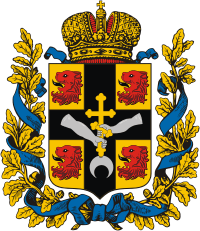 W
WThe emblem of the City of Tbilisi, Georgia, was designed in the late 1980s and reconfirmed as an official seal of the city on June 8, 2005.
 W
WTexas is one of eighteen states that have adopted an official coat of arms. The current coat of arms is the same as the original coat of arms used by the Republic of Texas before its annexation into the United States.